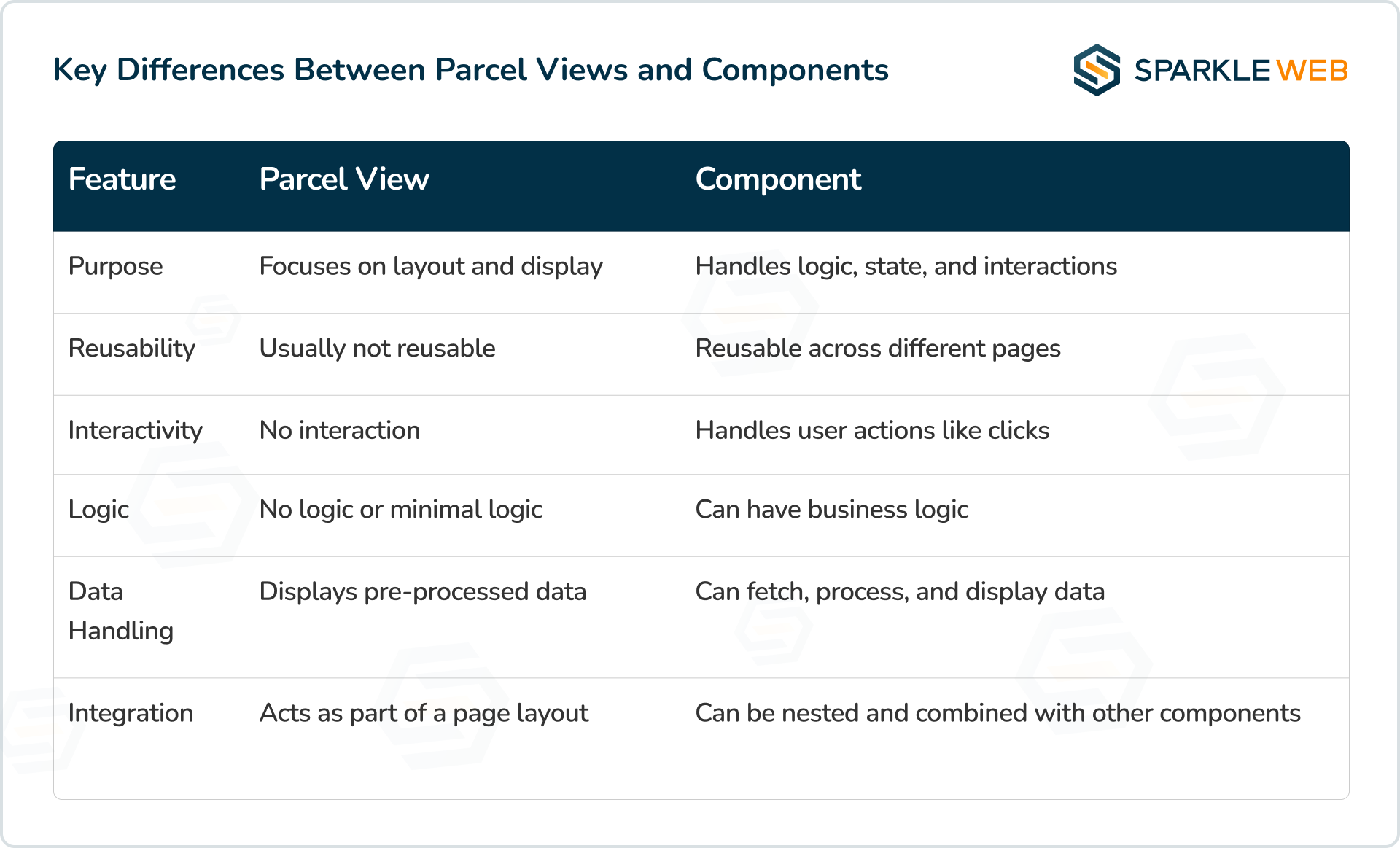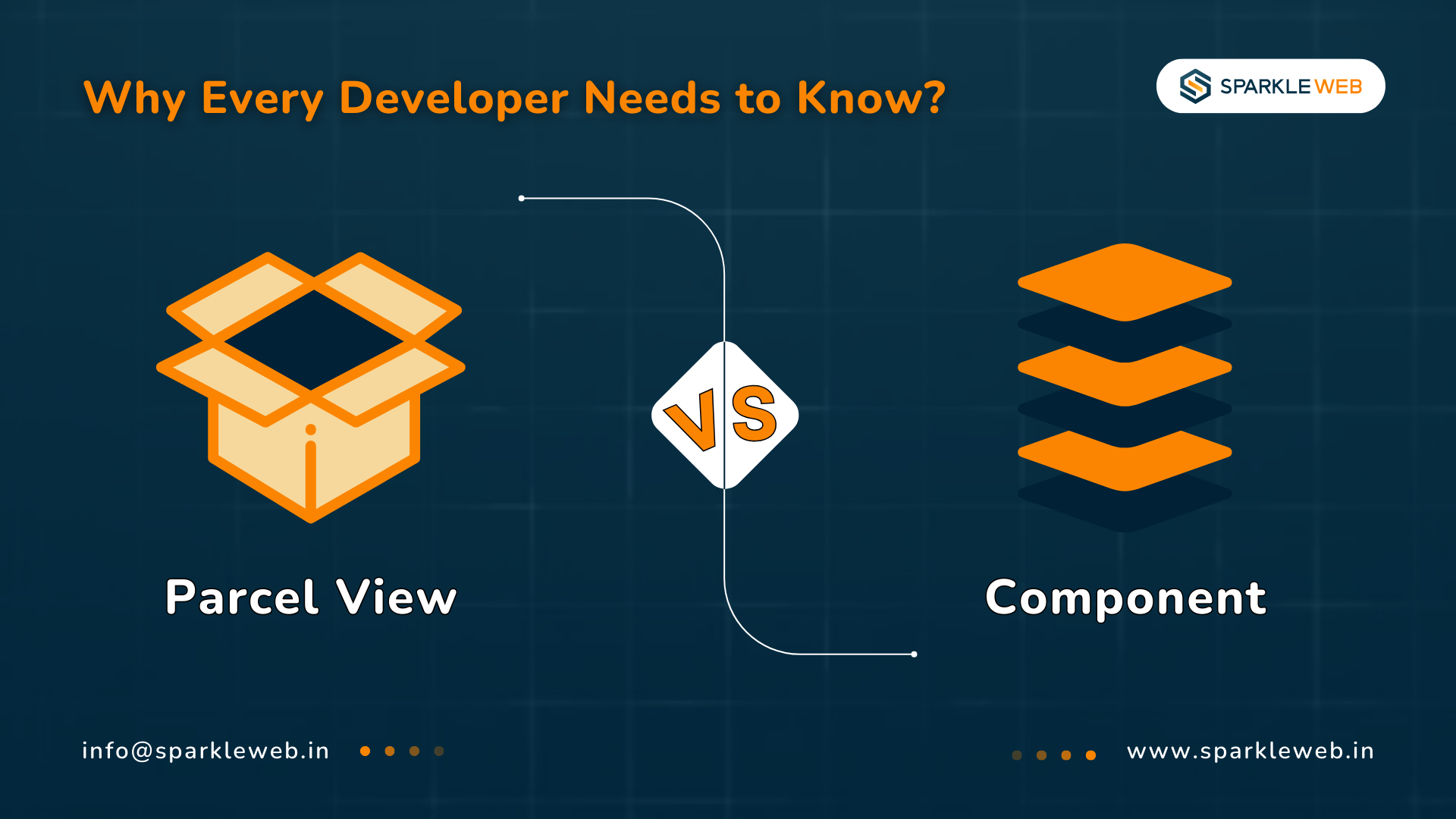-
What a parcel view is and how it is used.
-
What a component is and its role in development.
-
- The key differences between parcel views and components.
-
When to use each approach.
-
How they work together in real-world applications.
What is a Parcel View?
Key Features of Parcel Views
-
They display information but do not handle complex interactions.
-
They are often pre-designed and static.
- They do not manage business logic or make decisions.
- They are layout-focused and help organize content.
-
They are typically used for visually structured sections in applications.
Where Are Parcel Views Used?
-
E-commerce websites: A section showing product categories or featured items.
-
Dashboards: A summary section showing key statistics.
- News feeds: A list of articles displayed in a specific order.
- Landing pages: Sections with banners, promotional content, or testimonials.
Example of a Parcel View
-
Only shows data (e.g., product images, prices, and names).
-
Does not have buttons for adding products to the cart.
- Is designed to fit the layout of the homepage.
What is a Component?
-
Logic (e.g., fetching and managing data).
-
State (e.g., keeping track of user interactions).
- User interactions (e.g., clicking buttons, entering input).
- Reusability (they can be used in different parts of an application).
Key Features of Components
-
They can handle logic and state.
-
They respond to user actions (e.g., button clicks, and form submissions).
- They are designed to be reused across different pages.
- They can be composed together to build complex interfaces.
Where Are Components Used?
-
Buttons: A simple button that can be used in multiple places.
-
Forms: A login form that validates user input.
- Modals: A popup window that appears when a user clicks a button.
- Interactive charts: A graph that updates dynamically based on user input.
Example of a Component
-
A product image and name.
-
A button to add the product to the cart.
- A rating system that allows users to leave reviews.
-
Has logic (e.g., adding a product to the cart).
-
Responds to user actions (e.g., clicking a button).
- Can be reused across different pages.
Key Differences Between Parcel Views and Components

When to Use Parcel Views vs. Components
Use Parcel Views When
-
The focus is on layout – For example: Displaying a static list of products or images.
-
Data is already pre-processed – Example: A dashboard summary showing statistics.
- No interactivity is required – Example: A homepage banner that does not change.
Use Components When
-
You need interactivity – Example: A form with validation.
-
Reusability is important – Example: A button component used in multiple places.
- Dynamic data is required – Example: A table fetching API data.
How Parcel Views and Components Work Together
-
A parcel view provides structure and layout.
-
A component makes the individual parts functional.
Why This Matters for Developers
-
Write cleaner, more organized code.
-
Build reusable and maintainable applications.
- Create scalable UI architectures.



Vikas Mishra
A highly skilled Angular & React Js Developer. Committed to delivering efficient, high-quality solutions by simplifying complex projects with technical expertise and innovative thinking.
Reply